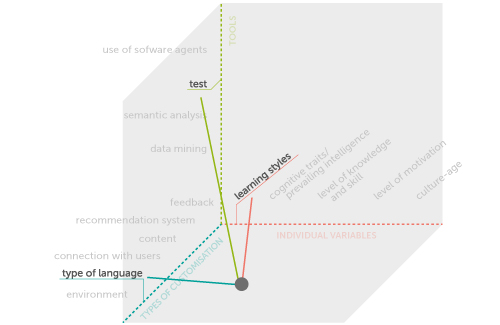The term adaptive learning refers to a set of technological and methodological solutions designed to customise the learning experience automatically based upon the specific characteristics of the target audience. Online self-training is an increasingly popular method of acquiring knowledge over the past decade, companies have focussed on building rich and varied educational assets, as well as creating eLearning paths that are both useful and effective. As “training assets” become more consolidated, we are faced with a new challenge: that of paying greater attention to learners, helping them to find their way among the multiplicity of initiatives and materials on offer, to move easily in online environments by providing pathways that truly satisfy their training needs and individual characteristics, basically building “made-to-measure” learning experiences. This is precisely the aim of adaptive learning, shifting the focus from learning objects and online environments to the learners. The key is customisation. Imagine customisation as being a three-dimensional space that correlates the following elements: individual variables/differences, tools and techniques for investigating differences, the type of customisation.

Various types of adaptive paths can arise from crossing variables. There are many crossings of variables, just as there are many studies and a lot of research that, at international level, focus on adaptive learning, which is a cutting edge issue. Let’s take a brief look at two avenues of research that are particularly interesting. The first is based on learning styles: the customisation of learning environments and training content is based on the variable of “learning styles” understanding the predominant learning style of every user allows support to be customised, a learning experience that is adapted according to its specific characteristics, for example: the learning style (individual variable) is investigated using a test (tool) and the system prompts users to consult resources/content that use certain types of language.

The second avenue is based on Learning analytics. Learning analytics means understanding the process of collecting, measuring, analysing and reporting data, with the intent of optimising the learning experience of students and/or the environment in which said experience takes place. eLearning platforms can collect and capture a very large amount of data which, if not used, is dispersed together with the opportunities that could arise from its use. For example: while analysing the assessments made by users on learning resources and courses (the level of satisfaction with the various contents), the system keeps track of its “movements” within the platform (e.g. the number visits to a course/resource, the time spent on a course/resource, etc.) and automatically suggestions which training resources users should consult. Proper collection and processing of data provided by the platform really offers us many possibilities and triggers a cyclical process that feeds the system continuously: the data, ‘raw material’, is processed via learning analytics and used by the trainimg eco-system to give rise to adaptive pathways that, in turn, generate new data.

Adaptive learning is not merely a “technical” issue, as it may appear. To enable customization, there must be a re-think of the design of the content it is necessary to create paths in the logic of micro-learning that are based on the principles of brevity, lightness, granularity and self-consistency: individual training content should take the form of small bricks that can be combined to create multiple forms. This is how users can build their own training paths in a way that is fluid, dynamic and challenging. Alessandra Scapati